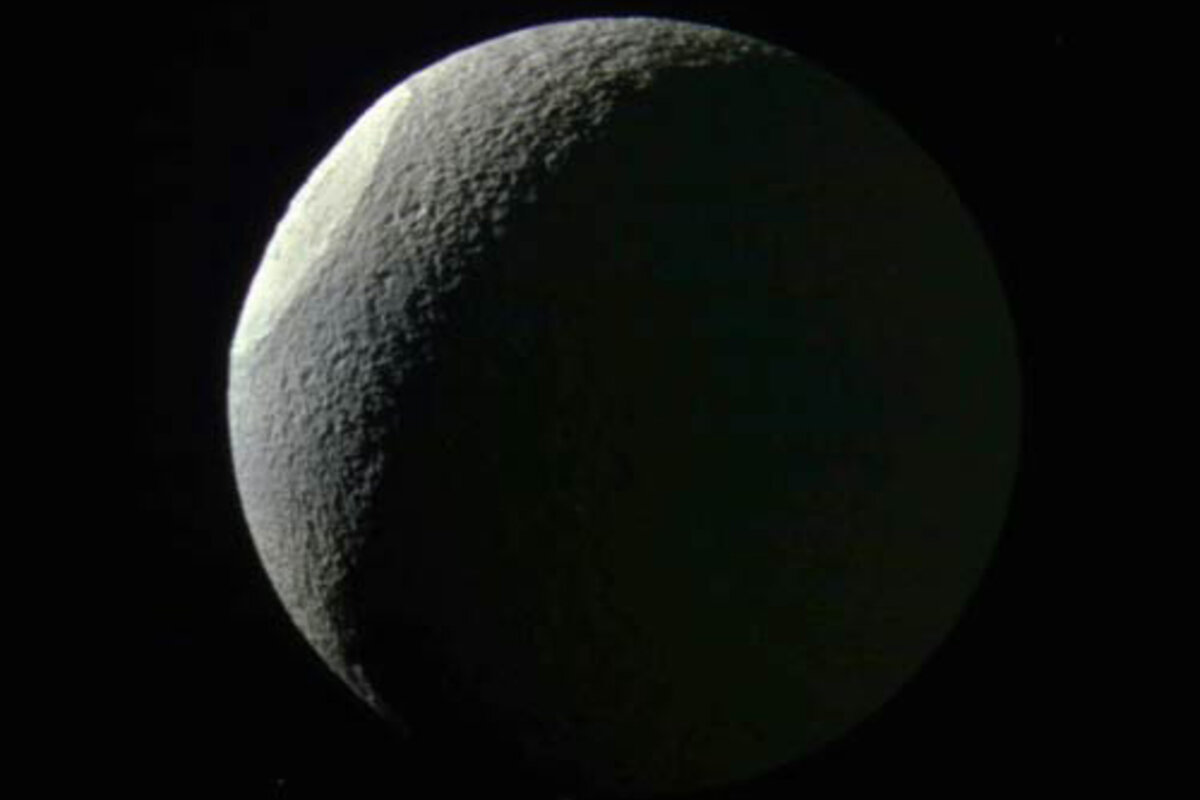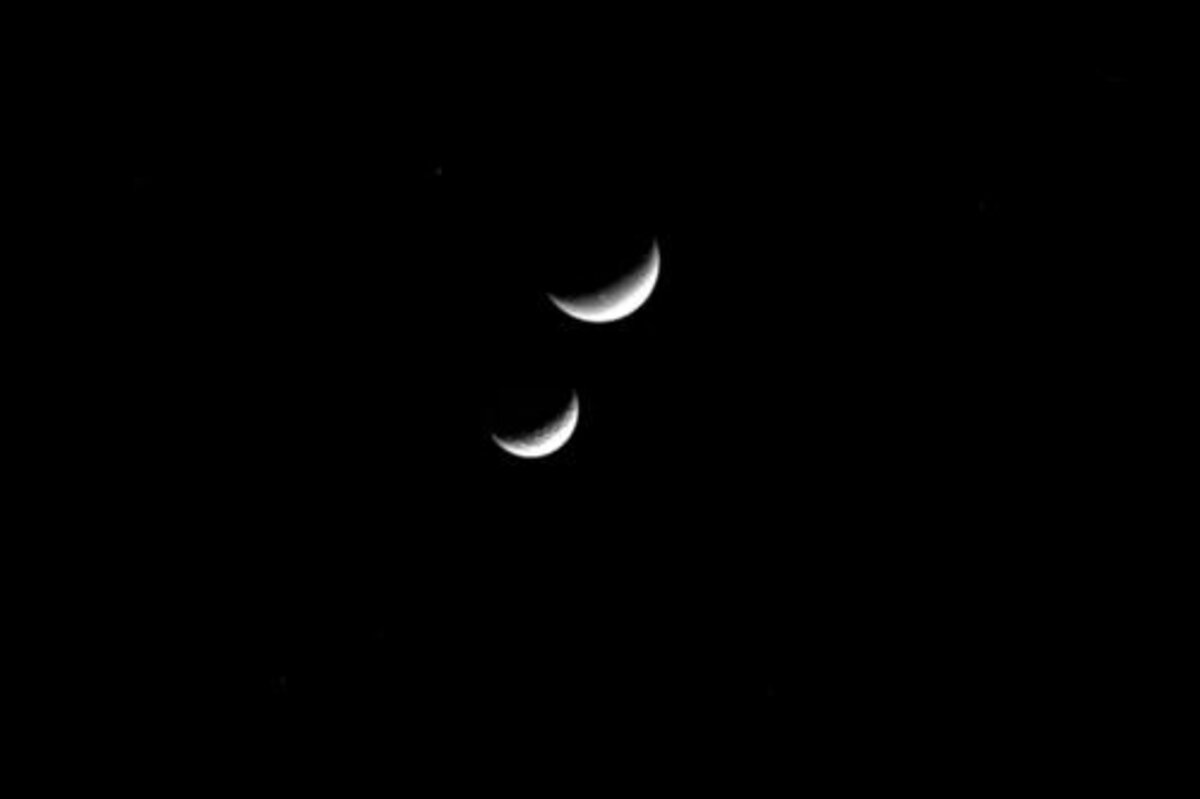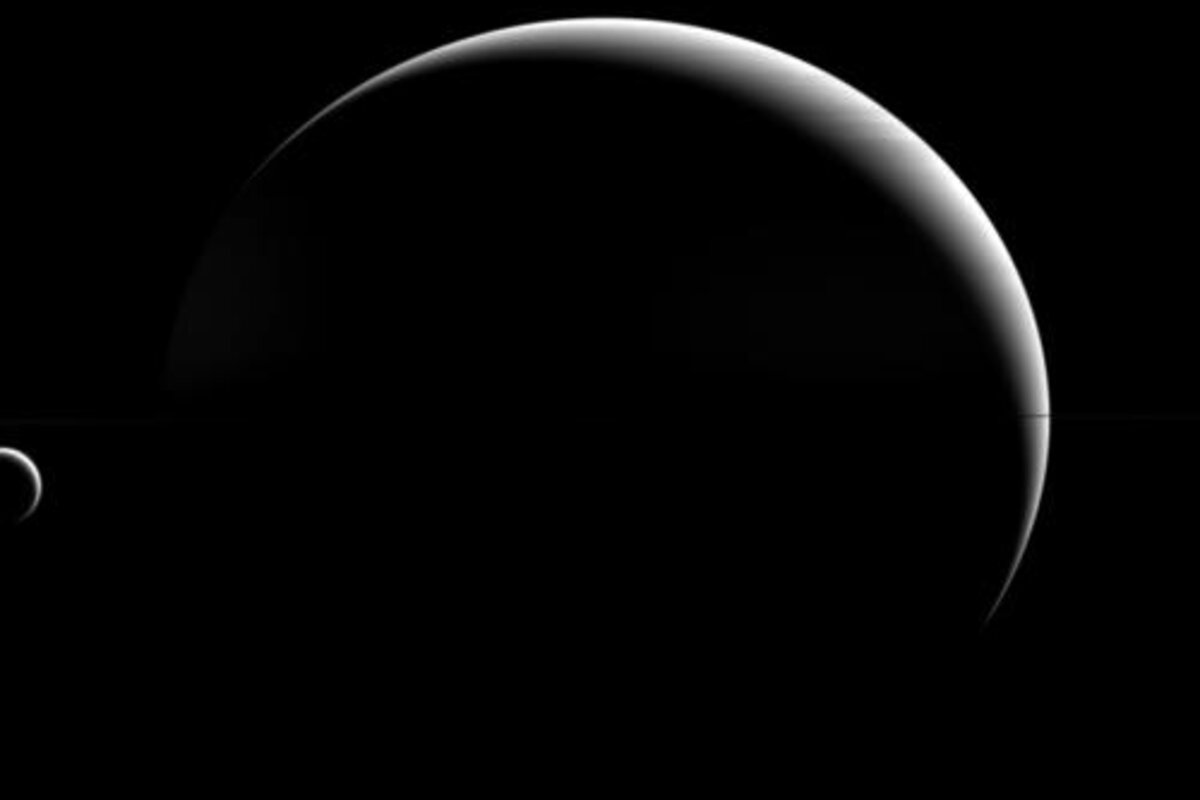Cassini sidles up to Saturn's Dione moon
Loading...
NASA’s Cassini spacecraft zipped past Saturn’s moon Dione earlier this afternoon, and scientists expect fresh images from the flyby to start arriving within a few days.
Cassini’s closest approach, coming within 295 miles of the moon’s surface, came at 2:33 p.m. this afternoon, NASA reported. The spacecraft has been orbiting Saturn since 2004, and has already conducted similar “gravity science investigations” of a handful of the ringed planet’s 62 known moons. In 2011, the spacecraft performed an even closer flyby of the moon, dropping with 60 miles of its surface.
From today’s flyby, Cassini’s cameras and spectrometers will offer NASA scientists a high-resolution look at Dione’s north pole. Scientists also expect the data to give them a better knowledge of the moon’s internal structure.
Bonnie Buratti, a member of the Cassini science team at NASA’s Jet Propulsion Laboratory in Pasadena, Calif., said that four previous flybys of Dione have provided “hints of active geologic processes,” including evidence of transient atmosphere and ice volcanoes.
“But we’ve never found the smoking gun,” she said in a NASA statement. “The fifth flyby of Dione will be our last chance.”
The last Dione flyby is one of several missions for the spacecraft’s final year. For its “grand finale,” NASA says, Cassini will repeatedly dive through the space between Saturn and its rings.
Here is a sampling of some of the latest lunar views captured by Cassini. More information is available on the Cassini Solstice Mission website.
With the expanded range of colors visible to Cassini's cameras, differences in materials and their textures become apparent that are subtle or unseen in natural color views. Here, the giant impact basin Odysseus on Saturn's moon Tethys stands out brightly from the rest of the illuminated icy crescent. The view was acquired on May 9, 2015 at a distance of approximately 186,000 miles (300,000 kilometers) from Tethys.
Dione in this image is the upper moon, while Tethys is the lower. This view looks toward the anti-Saturn side of Dione. North on Dione is to the right. The image was taken in visible light with the Cassini spacecraft narrow-angle camera on April 4, 2015.
Titan may be a ''large'' moon - its name even implies it! - but it is still dwarfed by its parent planet, Saturn. Although Titan (3200 miles or 5150 kilometers across) is the second-largest moon in the solar system, Saturn is still much bigger, with a diameter almost 23 times larger than Titan’s. The image was taken with the Cassini spacecraft wide-angle camera on April 18, 2015 using a near-infrared spectral filter with a passband centered at 752 nanometers.
[Editor's note: A previous headline for this story incorrectly suggested that Dione travels in a retrograde orbit around Saturn.]









